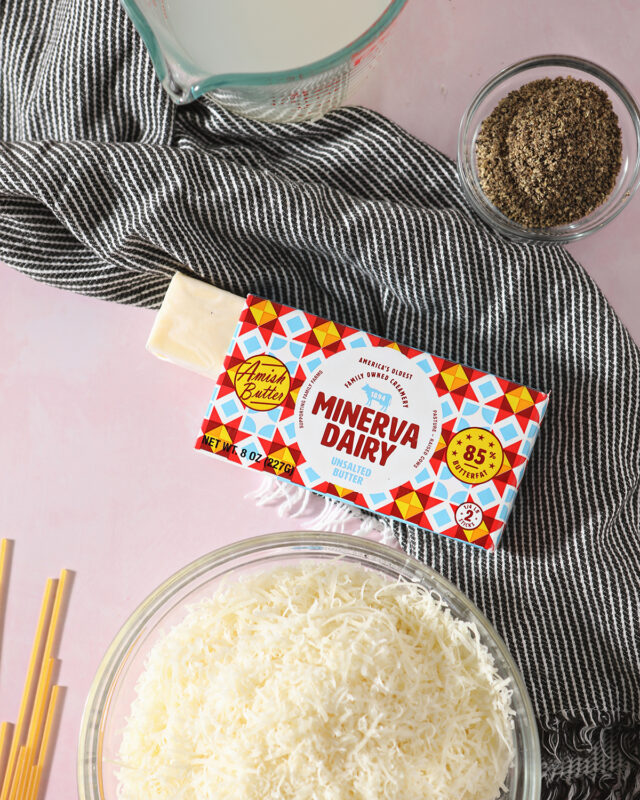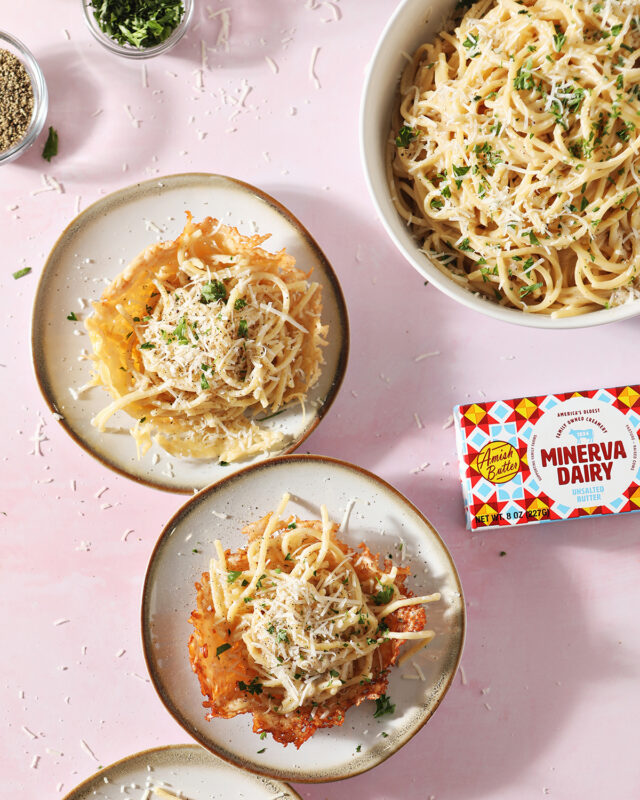Cacio e Pepe
Cacio e pepe
I’ll admit it, I’m a huge fan of Italy – and the Italian language. Not only do recipe names in Italian sound romantic and musical, they’re often a very simple and straightforward description of the food at hand.
Cacio e pepe is a perfect example. The literal translation of this Italian recipe name is “cheese and pepper,” which is an understated yet easily understood way of laying out the two showstopper ingredients. Make no mistake, cheese and pepper are two of the three components that jettison this recipe right into the “best of the best” category, but I’ll cover the third one – butter – later on!
A dish of pasta created by the Romans, cacio e pepe, with its grated Pecorino Romana cheese, could be considered the ultimate comfort food. So that’s why we snagged an outstanding recipe from our friends at The Speckled Palate – and no, we’re not giving it back!
Are you ready to make the food equivalent of a warm, fresh-from-the-dryer blanket on a cold, rainy day? Here you go.
Cacio e pepe: Dairy makes it special
Butter and cheese. Cheese and butter. No matter what order you put these ingredients in, know this: These two dairy products are the heart and soul of this dish.
Pecorino Romano is the cheese you’ll need to make excellent cacio e pepe. It’s a very specific version of roman cheese, but it was called a number of different, casual names throughout history. “Sheep’s cheese” is one common name, mainly because this salty and hard cheese is both made specifically with sheep’s milk, and hearty enough to stay edible for long amounts of time – something shepherds needed when they spent long stretches of time tending their flocks.
The second essential dairy product is butter – the high butterfat variety, of course. You might be tempted to use salted butter for this recipe, but resist that urge and go with the unsalted version. The salty flavor of cacio e pepe comes from the Pecorino Romano, so no need to add any extra – even with butter!
The role of dairy in this recipe cannot be understated. When you use high-quality butter heavy on the butterfat, and Pecorino Romano from your local supermarket or specialty shop, expect your cacio e pepe to become a favorite dish amongst your friends, family, and even coworkers.
Go easy on the prep, heavy on the flavor
There’s an added bonus to making this cacio e pepe recipe, and that’s time. You’ll have plenty of it left over as you make this recipe, because the prep work is simple, efficient, and straightforward – not to mention familiar!
For instance, you should make the spaghetti like you would make it for any other meal. There’s no need to deviate away from what works. Just remember to prepare your spaghetti al dente style – firm when you bite into it – rather than waiting for the pasta to get too soft.
One more thing. As one of the fifth (out of six) generations running America’s oldest family owned creamery, I can’t emphasize enough how often high-quality butter serves as a dividing line between okay food and spectacular food.
As I’ve watched our own family create award-winning, 85% butterfat butter over the years, using small batch production to deliver excellent quality each and every time, I can definitely say that when it comes to butter, never skimp. Your taste buds will thank you for it!
Be sure to keep up with our latest creations through our Facebook, Pinterest, or Instagram pages.
Ingredients:
- 1 lb spaghetti
- 2 tablespoons Minerva Dairy unsalted butter
- 1/2 lb grated Pecorino Romano cheese
- 1/2 cup pasta water
- 1-2 teaspoons freshly ground black pepper
- Chopped parsley and extra cheese, for serving

directions:
- Cook the spaghetti until al dente. (Follow the instructions on the pasta box, taking 1-2 minutes off cook time.) When finished, save some of the pasta water with a heat-safe measuring cup. Drain the pasta.
- Melt the butter in a large pan over medium heat. Add the pepper to the butter. (I added 1 teaspoon at first, then added a little more.) Pour in the pasta water, and bring the mixture to a boil.
- Add the pasta to the skillet, and toss it into the buttery mixture with tongs. Add 3/4 of the pecorino cheese, and continue heating and mixing until the cheese has melted.
- Serve warm, and garnish with extra cheese, pepper and parsley.
